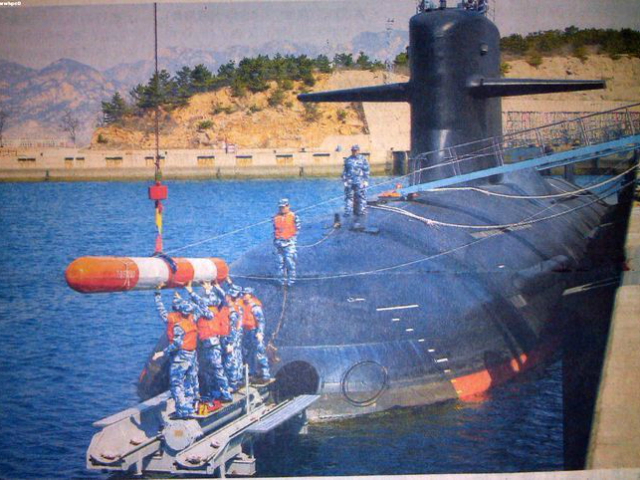The Japanese military claims to have discovered a Chinese Shang-class nuclear attack submarine in the East China Sea, operating submerged near the disputed Senkaku Islands on the perimeter of Japanese territorial waters.
The sub was initially detected on Thursday and then spotted again on Friday cruising on the surface and sporting a Chinese flag.
“We are seriously concerned over acts that unilaterally raise tensions. We’ll keep our guard up to respond swiftly if a similar incident happens,” said Japanese Defense Minister Itsunori Onodera at a press conference on Monday.
“Operating a submerged submarine close to another country’s territory goes against the norms of international rules,” Onodera added.
The defense minister said the Chinese submarine ignored “repeated warnings” that it was in the contiguous zone. He said it was “unacceptable” for the sub to ignore these warnings.
According to the Japan Times, the incident marks the first time a Chinese sub has been found operating in the “contiguous zone” surrounding recognized national boundaries. The nuclear sub was not technically violating Japanese territorial waters, but three surface vessels of the Chinese Coast Guard did precisely that on Monday, crossing into Japanese waters near the largest of the Senkaku Islands and lingering for about an hour and a half.
The Japanese government labeled China’s surface incursion “extremely regrettable” and recommended improving communications between Japan and China to reduce the chances of a military confrontation in the East China Sea.
The Shang-class submarine, formally classified as the Type 093 nuclear attack sub, is capable of vertically launching cruise missiles at land targets and possibly surface vessels. The newer Type 093B variant is believed to have capabilities on par with the older Los Angeles-class subs that are the mainstay of the U.S. Navy’s undersea fleet. Japanese technicians say the sonar profile of the sub detected on Thursday indicate it was one of the newer variants.
The South China Morning Post reports speculation in the Japanese Defense Ministry that China sent its submarine to the Senkakus, which China claims under the name “Diaoyu Islands,” to test Japan’s patrol capabilities. Others warned the sub might have been training for a future military operation in the islands. Onodera curtly dismissed all such speculation by saying, ‘There is no need to guess.”
Stars and Stripes cites a statement from Prime Minister Shinzo Abe’s Cabinet directing the Japanese military to “prepare for all possible contingencies and to coordinate closely with the U.S.”
“The Diaoyu Islands are a natural part of Chinese territory. China’s decision to guard the sovereignty of the Diaoyu territory is unshaken,” Chinese Foreign Ministry spokesman Lu Kang said on Thursday.
The Senkaku Islands are small and sparsely inhabited, but they are important because they are close to major shipping lanes, they make for excellent fishing grounds, and, most importantly, because sizable reserves of oil and gas are believed to be located nearby. Japan accuses China of caring little about the islands until the oil and gas were discovered. China claims the islands were part of its territory for centuries until Japan claimed them, and therefore should have been returned to Chinese control after World War II.

COMMENTS
Please let us know if you're having issues with commenting.